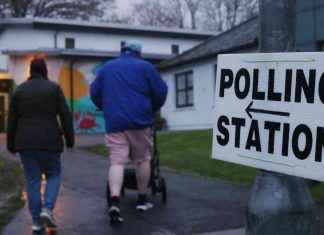What the Mets are banking on, as much as anything, is this: Math.
Specifically: Good math.
Specifically: The laws of probability reversing course and carrying them to a full season of peace and prosperity among a pitching staff that remains the envy of baseball, in possibility and potential if not necessarily accomplishment.
The Mets’ big headline splash this offseason may have been re-signing Yoenis Cespedes to a fat contract commensurate with the offensive numbers he has produced in a year and a half in Flushing.
Their continuing obsession might be trying to figure out an outfield currently crowded with five players for three every-day positions.
But their being, their soul, the underlying reason why they still can be serious players in the National League, remains wrapped around their identity as a haven for young arms. And yes, despite the a year in which it seemed every one of those star arms spent more time in triage and post-op than Hawkeye and Trapper, they still are just that:
Definitely young.
Definitely talented.
As Terry Collins cooed last year, early, before the injuries started to mount and the Mets’ disabled list became something that you needed both a front and back side for: “You just don’t see a collection of guys like this. You don’t. You just don’t have the kind of talent these guys have, where you could envision every single one of ’em as an ace someday — and someday soon.”
Even then, the manager of the Mets understood the foul storm clouds that follow. Maybe not as intently, and maybe not as relentlessly, but …
“The key,” Collins said, “is trying to keep them healthy.”
So there is math. There is bad math — the kind that ultimately kept four-fifths of the Mets’ projected rotation on the disabled list for varying degrees last year. And there is good math — the kind that insists such a snake-bitten routine can’t be repeated. Or at least shouldn’t be. Or at least ought not to be.
But think of it:
Noah Syndergaard won’t turn 25 until August. He had 218 strikeouts last year, averaging 10.7 per nine. The last time we saw him, he was mowing down the San Francisco Giants in a playoff game — seven innings, two hits, 10 strikeouts — treating the biggest moment of his life like an intrasquad scrimmage in Port St. Lucie.
Matt Harvey, despite the fact it seems like he broke in with Don Cardwell, won’t turn 28 until next month. He is coming off a shoulder injury whose track record is hard to predict, but you have to believe he will be motivated not only to prove himself physically capable of the task of resuming his old rotation spot, but that he has matured from the petulant kid he too often has been, too.
Steven Matz won’t turn 26 until May. It is worthwhile to remember what he looked like the last time we saw him, last Aug. 14: 7 ¹/₃ no-hit innings against the Padres at Citi Field, eight strikeouts. Over his final 21 outings last year, Matz was 9-7, 2.96 ERA, .670 OPS against.
Jacob deGrom won’t turn 29 until June — making him the old man of the bunch. He is also the most accomplished: 2014 Rookie of the Year, as well as his epic 2015 postseason. His season ended so poorly last year it is easy to forget in his first 21 starts deGrom was 7-5, with an ERA of 2.29, averaged more than a strikeout an inning despite a season-long battle with velocity.
And, of course, there is Zack Wheeler (27 in May), and Robert Gsellman (24 in August) and Seth Lugo (29 in September), and … well, you get the idea. Gsellman and Lugo were superb last year. Wheeler remains a wild card. Among the three surely will be a man who can cover Bartolo Colon’s innings from a year ago.
Assuming the math stays right. If it does, that’s an awful lot of arms. That’s an awful lot of possibility.
Our editors found this article on this site using Google and regenerated it for our readers.





